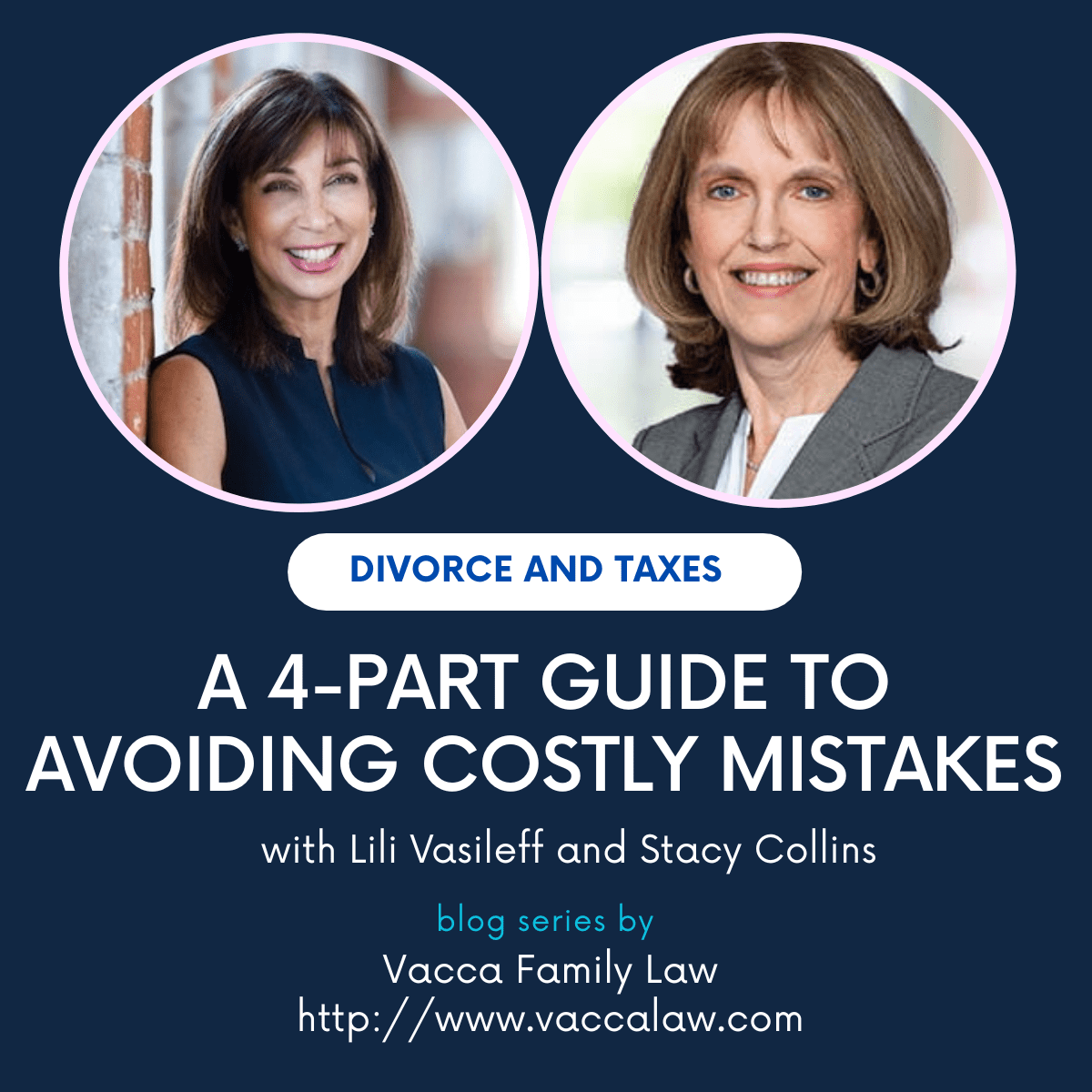JULY 1, 2020 • LILI A. VASILEFF
According to research, March is the most popular month to file for divorce, maybe because couples want to get past the holidays and taxes (or maybe it’s just “March madness”). This past March, however, we also began dealing with the Covid-19 pandemic and self-quarantining. Most families have had to endure financial hardship, childcare issues and the inability to live life outside their homes.
These massive disruptions to daily living undoubtedly increase strains that would shatter any seemingly perfect marriage. Spouses find out how different they are when dealing with a crisis, which can spark unforeseen conflicts between them. As the Covid-19 confinement ends and courts start to reopen, it is expected that a tsunami of divorce filings will break across the country. Family law experts are already experiencing a 50 percent rise in inquiries from potential clients.
But for those who have been forced to retire early or are out of work unexpectedly during Covid-19, a divorce can wreak havoc on joint finances. Some individuals will be hit harder than others and will remain vulnerable for a much longer period of time.
Being In Limbo
Couples who were well into the process of divorcing are right now living in limbo—after months or maybe years of negotiating a split, they now have to wait even longer to get in front of the court to have closure on orders for custody, access, support and the division of marital property. Previously negotiated deals may be difficult to honor. Disputes may become prolonged without available guidance from the courts, which have been closed except in cases of emergency and essential pleadings.
The stock market, meanwhile, has suffered both a downturn and fluctuating asset values, leaving splitting couples with crushing anxiety about which date to pick for executing their property division. It’s hard for them to know when to sell a marital home. Small business owner spouses might be experiencing a high risk of loss and bankruptcy.
Support obligations are stretched to the limit because primary breadwinners are facing unemployment. Parenting situations can change if one parent is keeping children full time during self-isolation and needs greater financial support.
For these reasons, Covid-19 has created an environment of tension, fear and panic for many divorcing families.
Gray Divorce
If there’s a surge in divorces when the stay-at-home orders are lifted, it would defy trends. The U.S. divorce rate has been stagnant for 30 years according to the Pew Research Center. (The rate is actually declining among younger couples.)
But the rate has nearly doubled for adults over 50 since the 1990s. And for adults 65 and older, the rate has tripled in that time, a trend often referred to as “gray divorce.” Fifty-five percent of that group, also known as “silver splitters,” are leaving their first marriages—long-term unions that had lasted more than 20 years.
With people living longer, it makes sense that they don’t want to spend their retirement years in unhappy unions. They don’t want their retirement to feel like the end, but like a new beginning. Research by Psychology Today has shown that with the stigma of divorce decreasing, older adults are more likely to seek independence to pursue their own interests, undo past regrets, find greater self-fulfillment and achieve higher standards in their relationships. The No. 1 thing that prompts a late-in-life divorce is not a life transition (from someone facing an empty nest, for instance) but one’s marital experience. Older adults no longer want to feel disconnected emotionally or intellectually from their partner.
But those divorcing later in life face unique financial challenges. Older couples worry more about whether their income will be sufficient if it’s divided between two households. They are also concerned about outliving their assets, about their financial independence and about being alone. The majority are unlikely to recoup financial losses associated with divorce.
Those getting divorced later are likely to have a smaller economic cushion at the same time they face a longer life expectancy. Their income will likely be uncertain at the same time they’re dealing with health-care costs and increasingly complex family obligations for varying dependents—adult children and elders, for example. They may or may not be doing this with personal financial acumen. And at the same time, they might also be fighting anxiety and depression.
Remarriage In Late Life
More people are getting married after 50 than ever before. According to Pew, adults age 55 and older accounted for 33% of the total number of remarriages in 2013 (whether the marriages were second, third or beyond). Sadly, for the eternally hopeful soul who remarries, the success rate is not in their favor. Known as the “divorce echo effect” (from Psychology Today), 48% of first marriages end in divorce, 60% of second marriages and 73% of third marriages. There is less mutual experience holding these new unions together—less “glue” to bind them. And the increased likelihood of these new couples divorcing jeopardizes their financial security.
Older adults who remarry surprisingly shy away from wealth protection vehicles. Only 3% of people who have a spouse or are planning on getting married in the near future have a prenuptial agreement. Only 5% of divorces that occur in the United States have such agreements in place to help spouses dictate the divorce proceedings. Part of this stems from a social stigma against pre- and postnuptial agreements, but that stigma may be chipped away by the Covid-19 pandemic, at least in the short term.
Challenges During Covid-19
When people decide to get divorced on the cusp of retirement, it not only exposes any faux pas they might have made in their marriages but missteps they’ve made in their planning for retirement as well. According to a survey by the U.S. Government Accountability Office, nearly one-third of the households of those age 55 and older have neither retirement savings nor a pension. According to a May 2020 survey by YouGov on behalf of Bankrate.com, 14% of Americans with retirement savings, both those working and unemployed, have already tapped into those funds during the pandemic to meet their daily living expenses.
In good financial times, such missteps are easily overlooked. Money keeps flowing in and a couple’s precarious financial situation can remain hidden. But when an income stream stops or differences in spending habits become obvious enough, the jig is up. The family incurs a heavy burden that is emotionally and financially traumatic.
As a seasoned divorce financial expert, I recognize that my clients need greater context to negotiate the standard divorce-related financial issues. Such planning involves a comprehensive analysis of the division of property, child support and maintenance as well as the anticipation of various scenarios and projections for settlement. But since everything is currently up in the air during the coronavirus turmoil, divorcing couples are feeling overwhelmed and are at greater risk for making knee-jerk decisions. Their short-term plans may feel much more tentative: Will their kids be going off to college in the fall? When should they put their houses up for sale? Can they go back to work? How do they take care of elder parents?
As professionals, we must focus on how best to support our clients dealing with a late-life transition, heightened uncertainty and “novel” risk factors. Financial therapy plays an important role in calming our clients. Everyone wants to hear something positive. As Bon Jovi says, when we can’t do what we do, we do what we can. Divorcing couples need comfort in dealing with new contingencies.
Financial Expertise Needed
Financial advisors are an underutilized resource in divorce. If you have clients contemplating or going through late life divorce during the pandemic, you should discuss these critical areas with them:
- Cash flow needs and sources of emergency liquidity. Clients must maximize the value of every dollar and cut expenses.
- Remaining work years and pushing back retirement. Clients will likely have to replenish their savings.
- Social Security benefits and claiming strategies. Clients may desperately need this income now.
- Health issues and insurance. Clients will have to focus on taking care of themselves.
- Distribution of marital property, especially retirement assets. Clients shouldn’t sell investments out of fear.
- Debt relief options. Clients might want to take advantage of low interest rates and focus on improving their credit ratings.
You can be part of the silver lining of gray divorce. If your clients have clear financial navigation, their lives can look much brighter after they split up. The fulfillment they are seeking after this divorce, especially if they are doing it in retirement, will be easier to achieve if you’ve prepared them financially.
Lili A. Vasileff is a divorce financial expert and the president of Wealth Protection Management in Greenwich, Conn., and the author of three books, including Money & Divorce: The Essential Roadmap to Mastering Financial Decisions published by the American Bar Association. Her website is: www.wealthprotectionmanagement.com.



